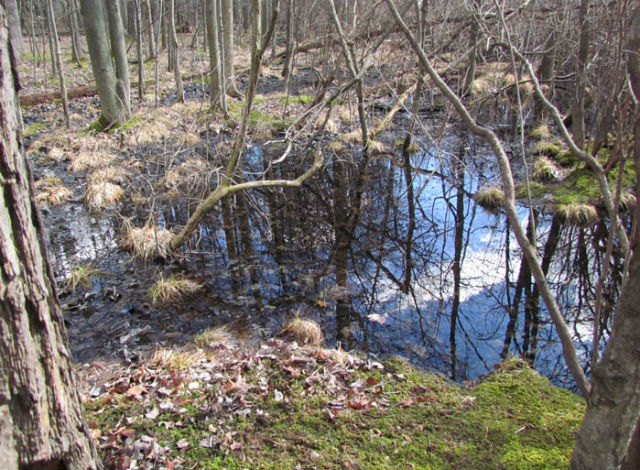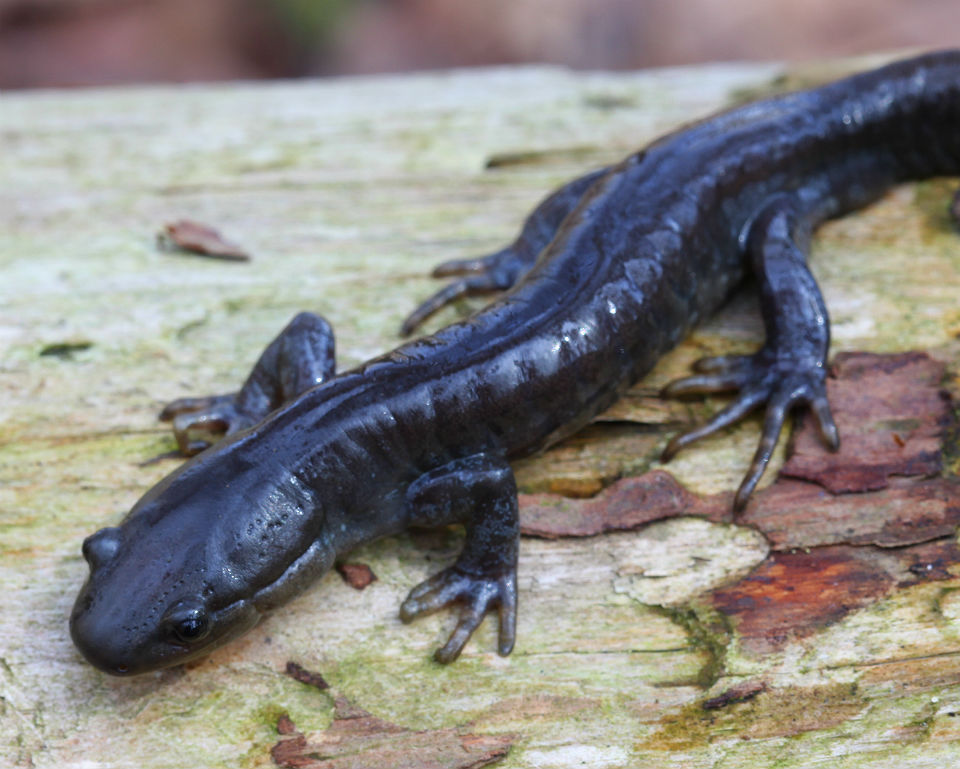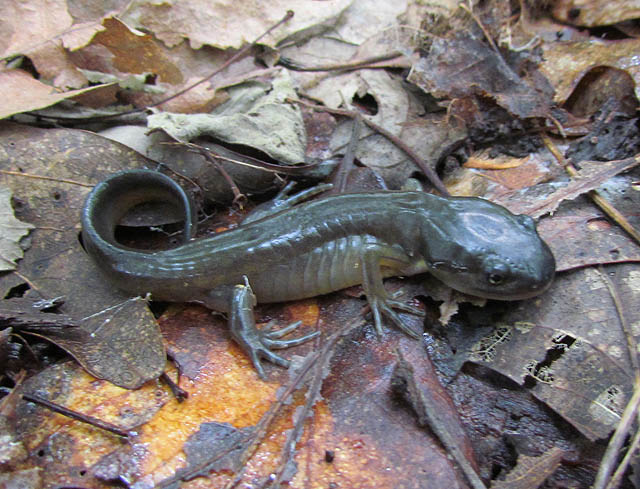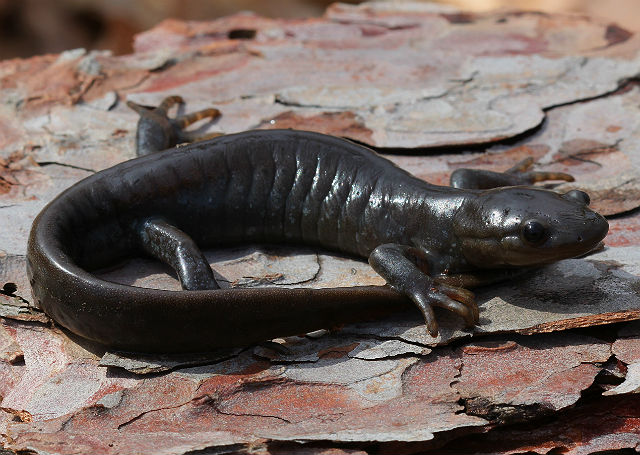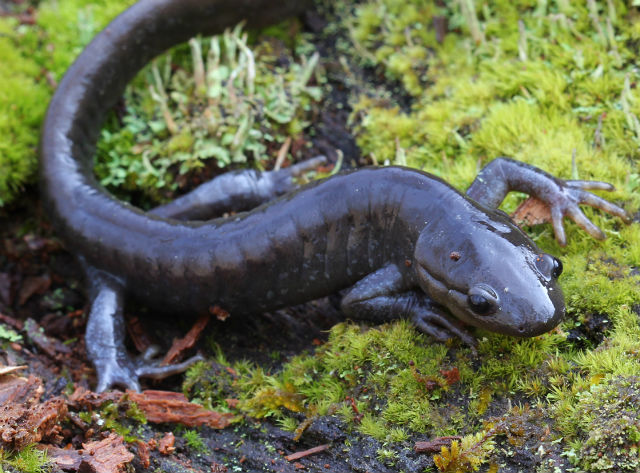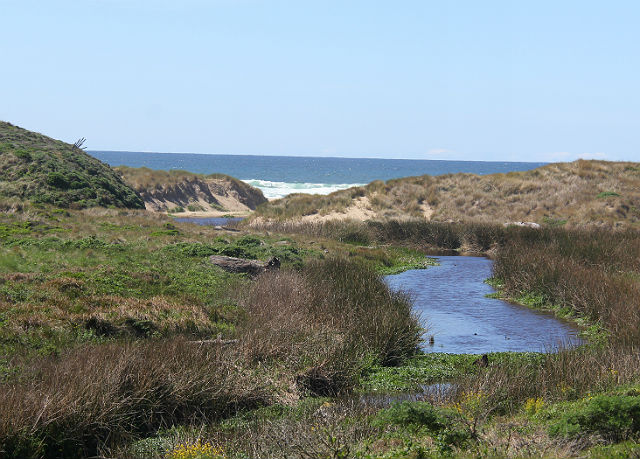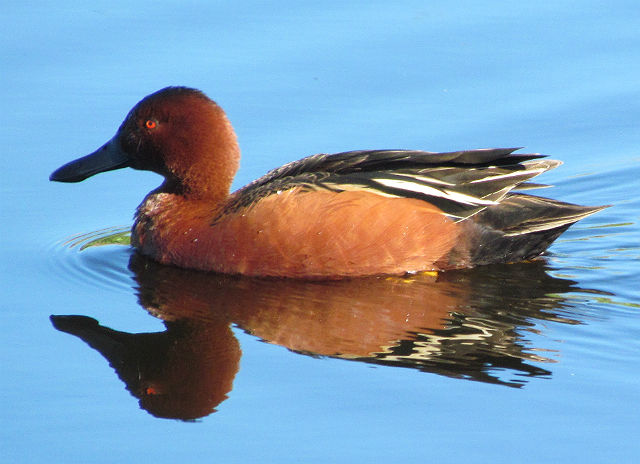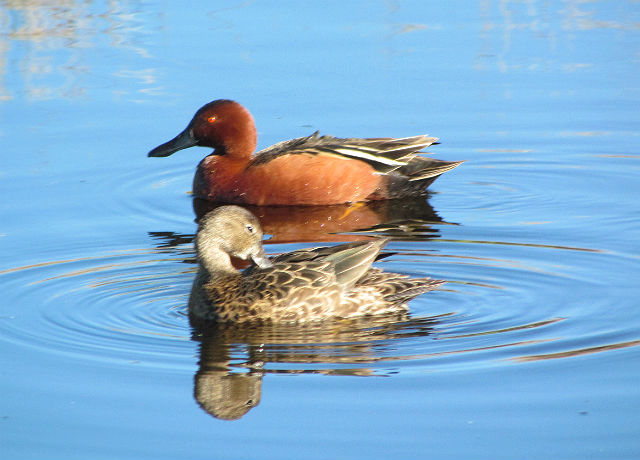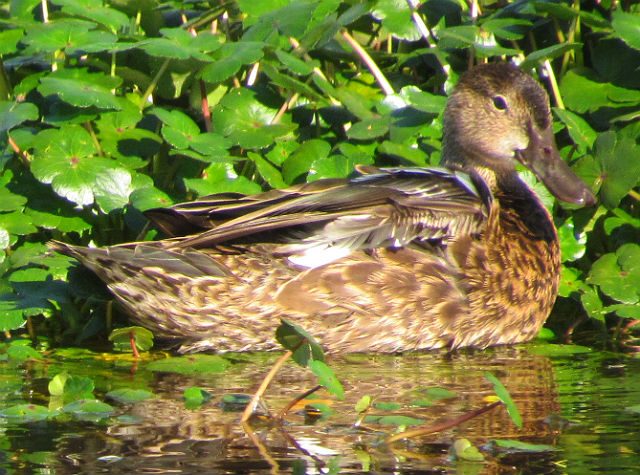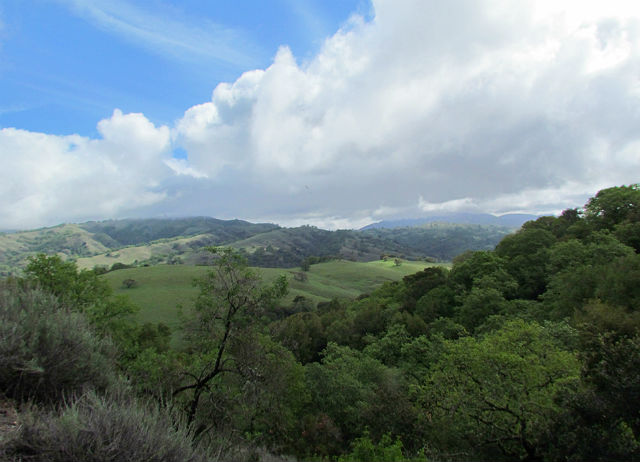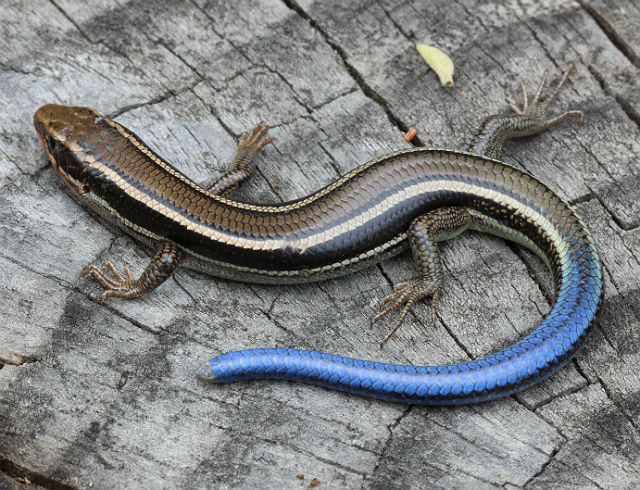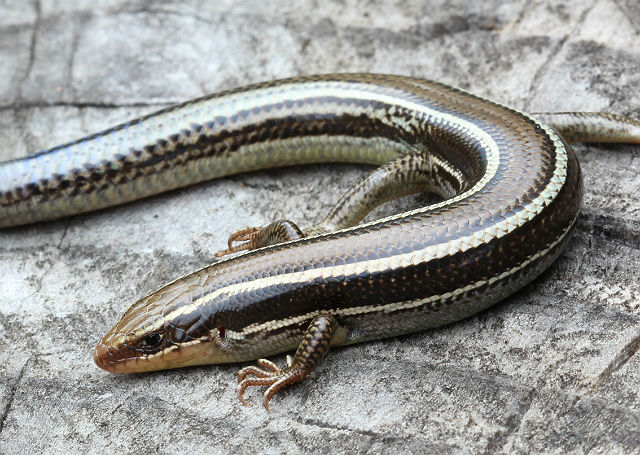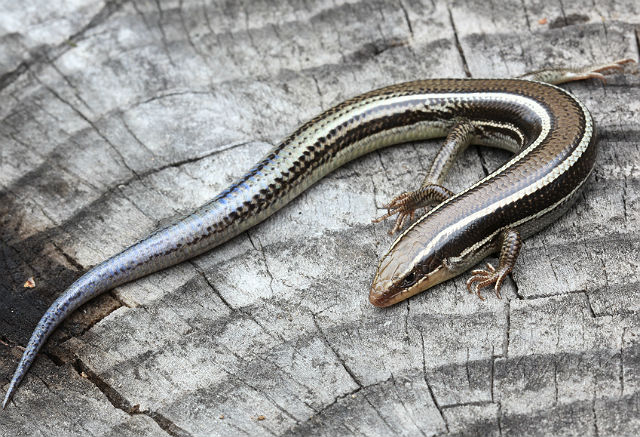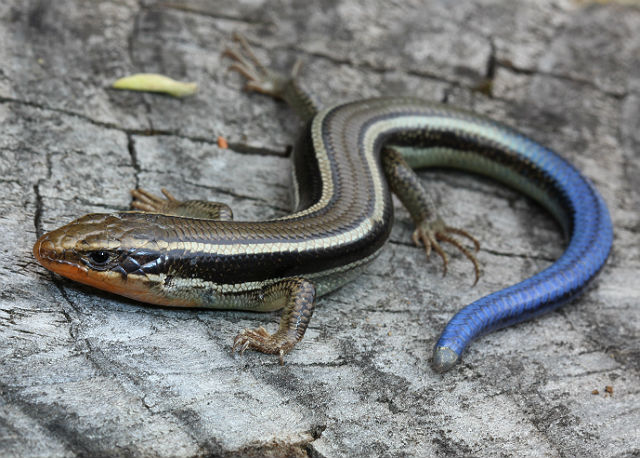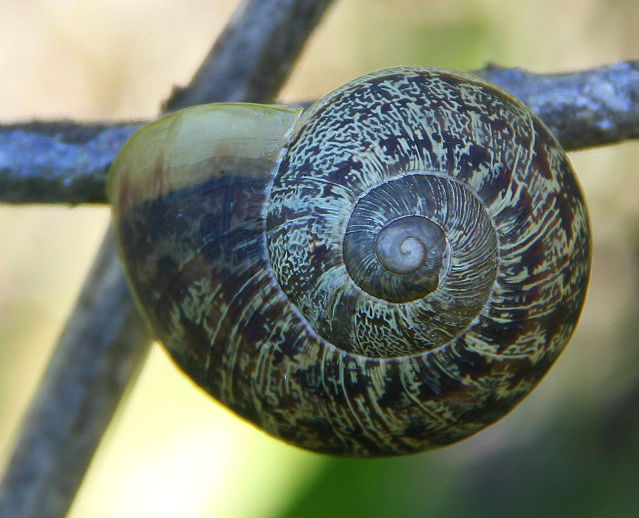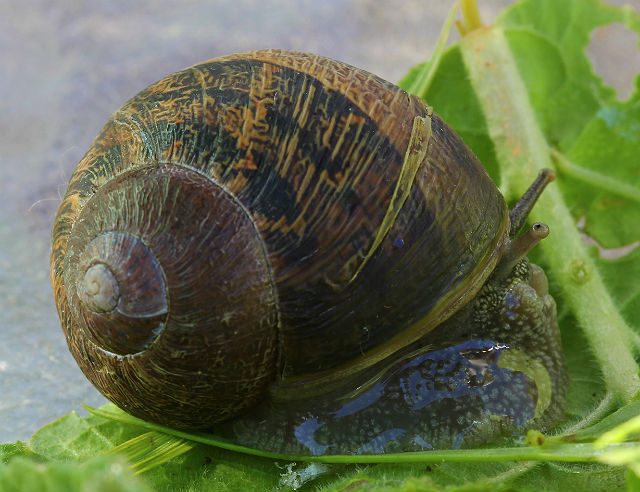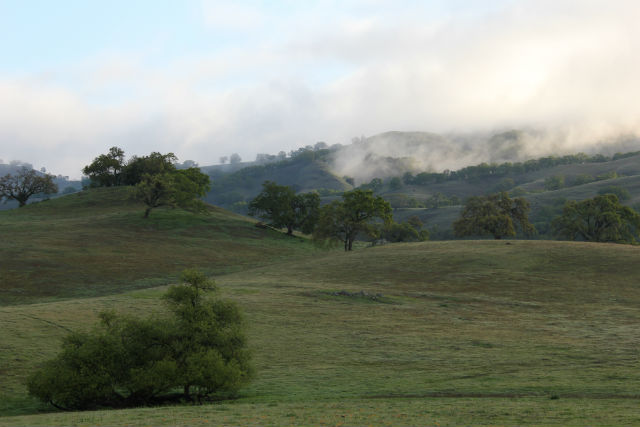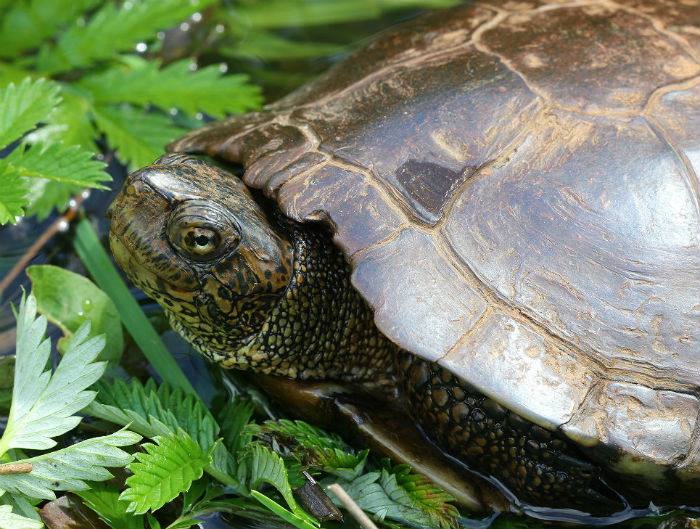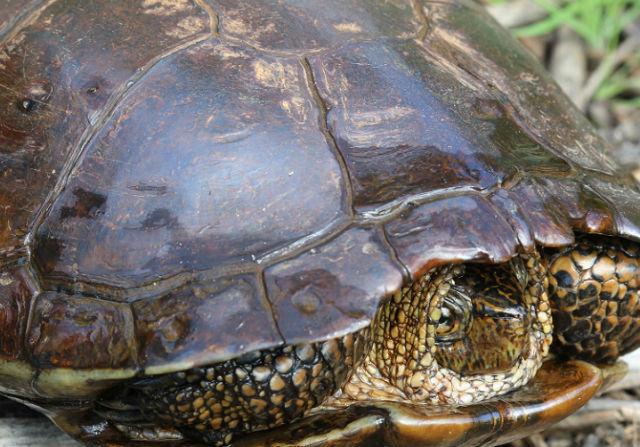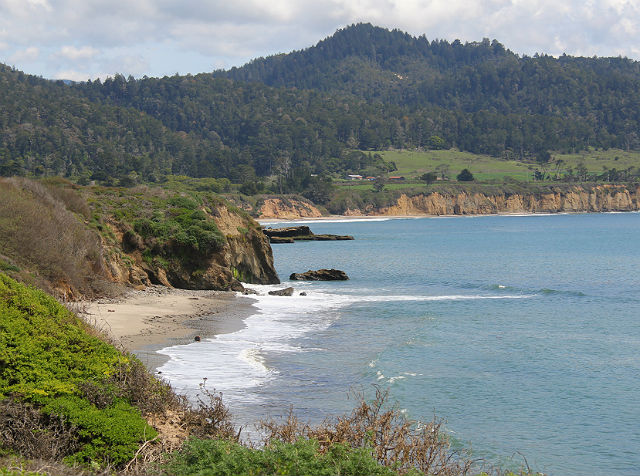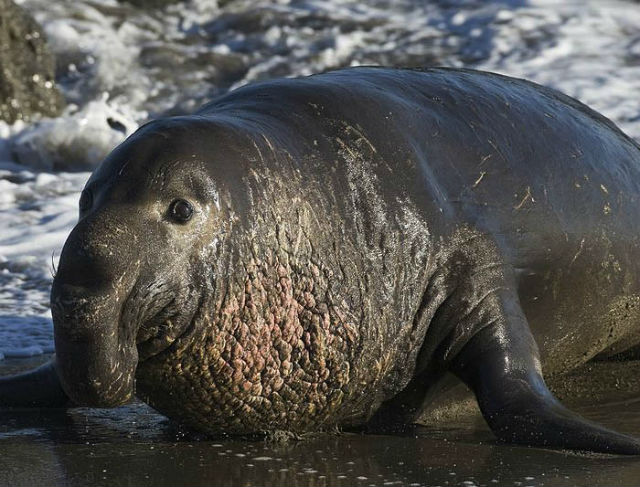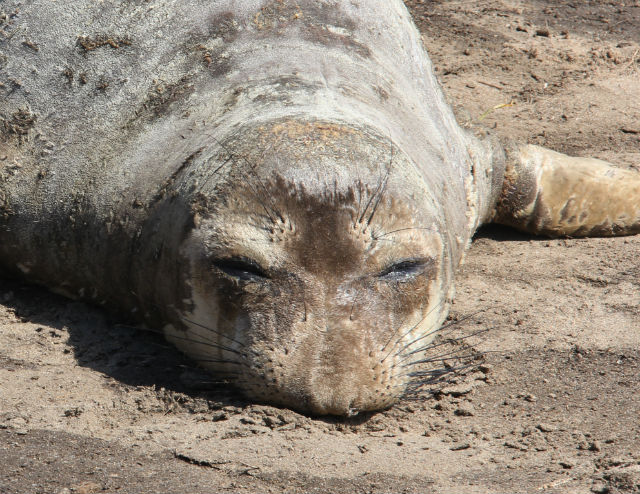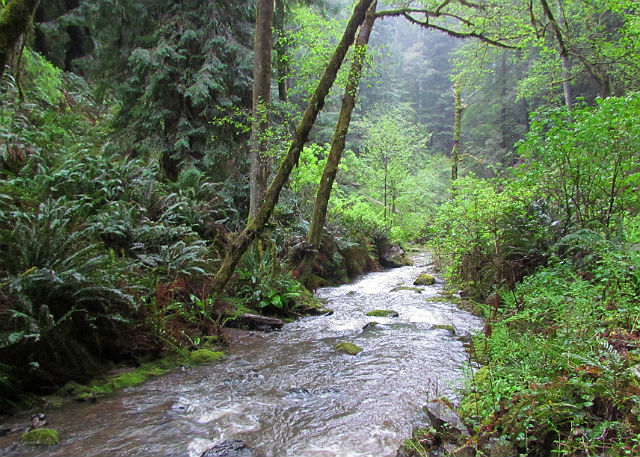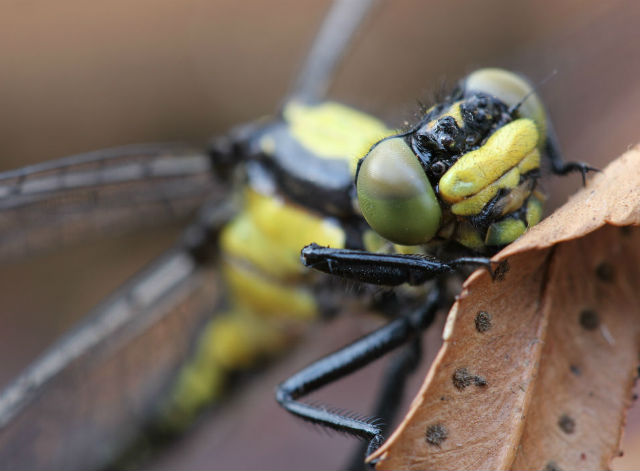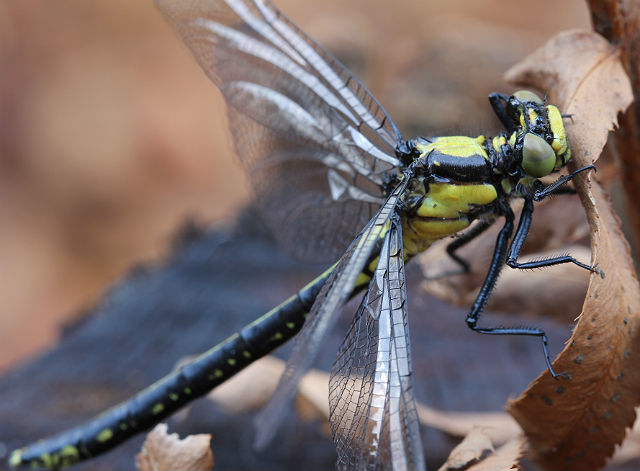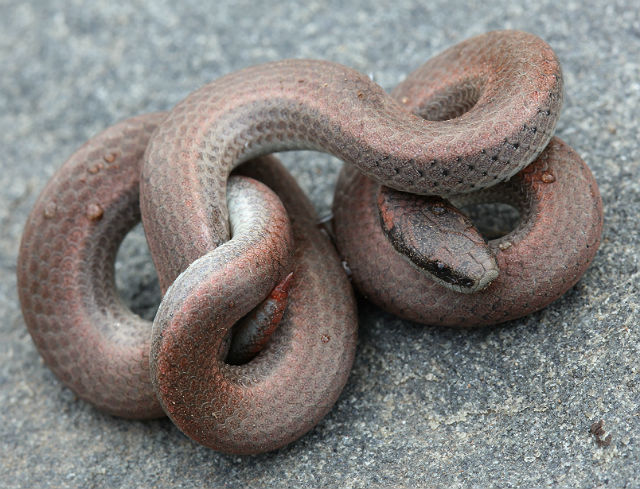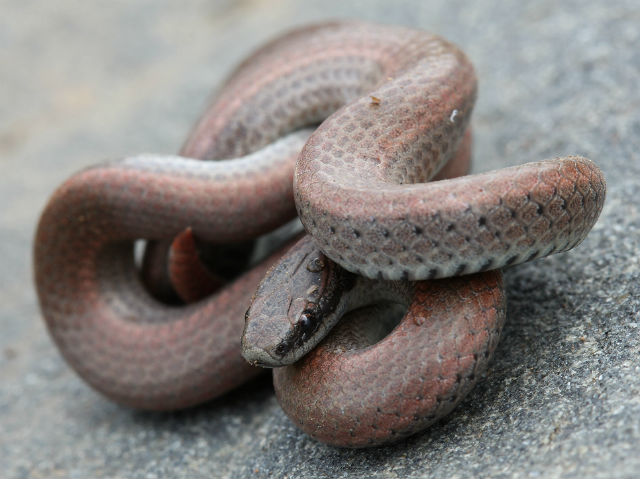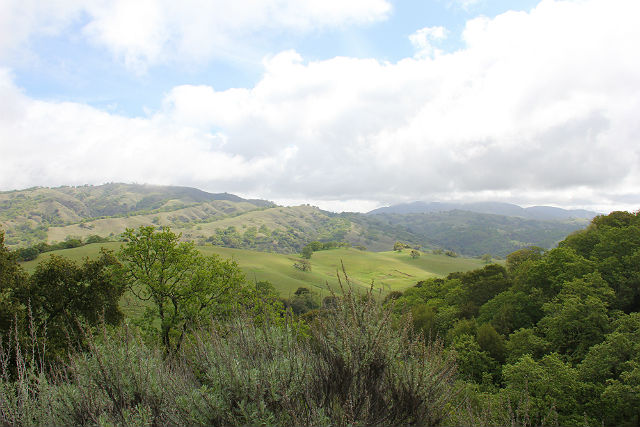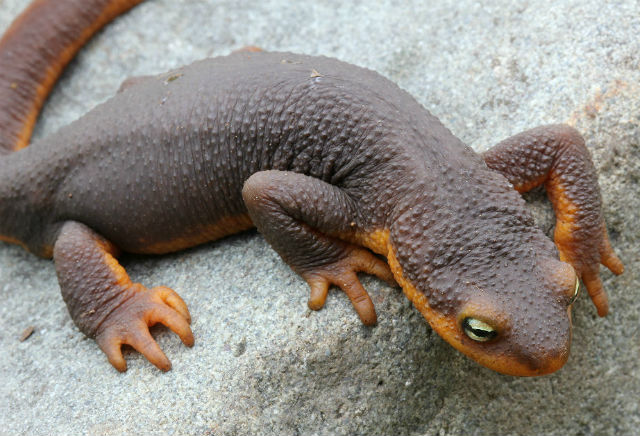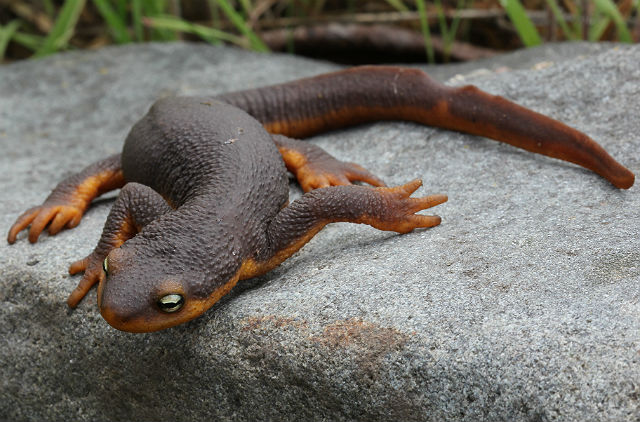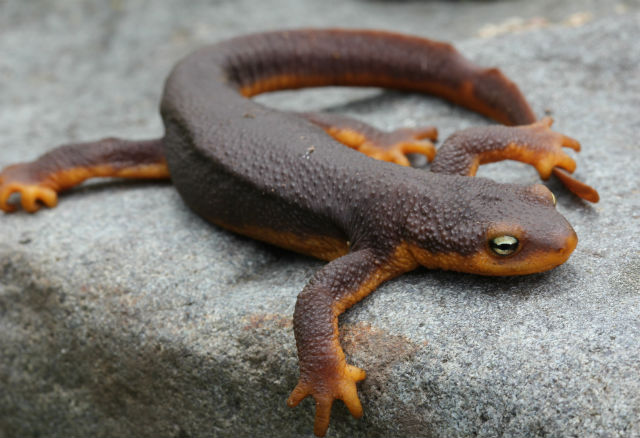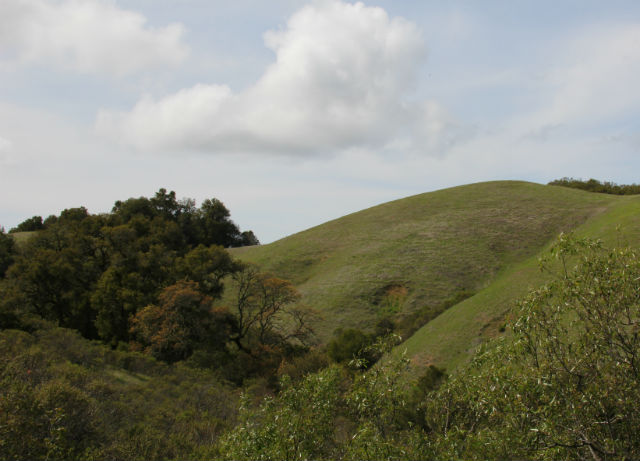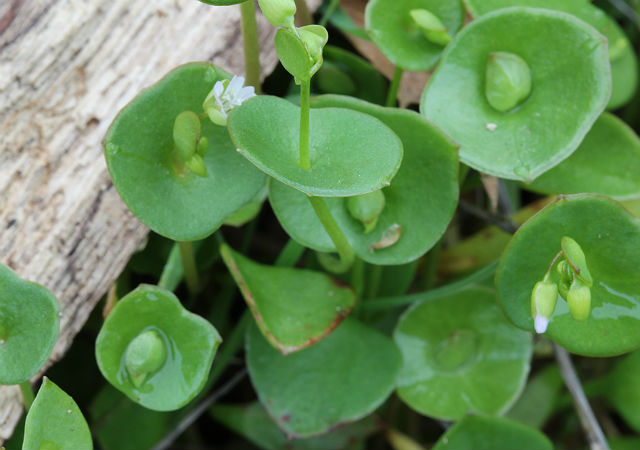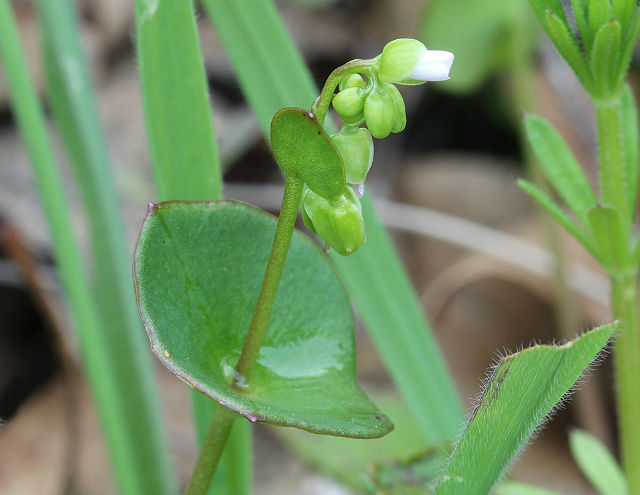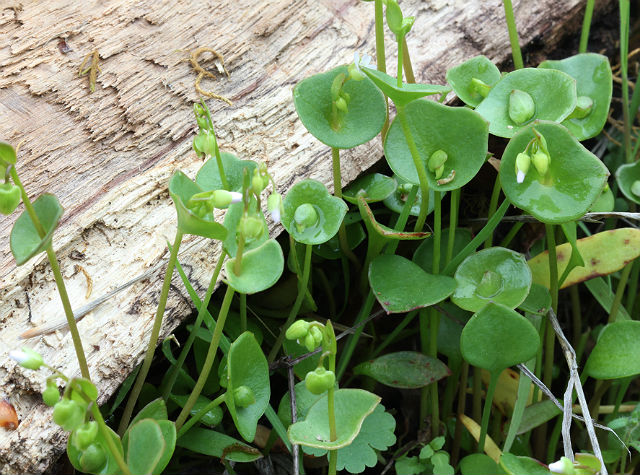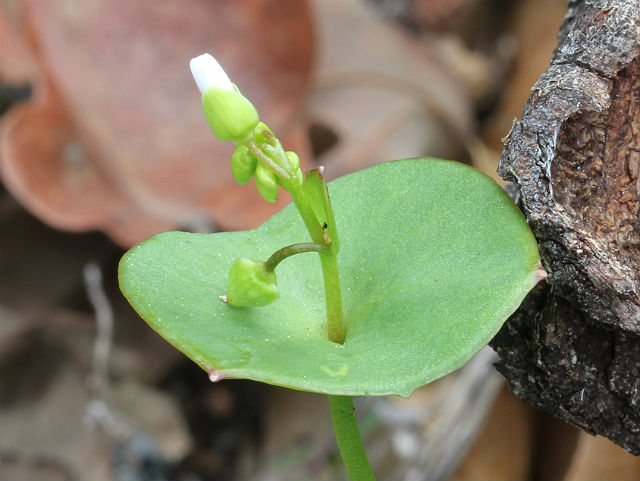The Jefferson Salamander belongs to a group of amphibians known as mole salamanders, named because they spend most of their life underground. The only time you are likely to see them is now, when they are migrating to temporary pools in the woods to mate and lay eggs.
Egg masses contain 20-30 eggs are attached to fallen tree branches underwater. The time it takes for the eggs to hatch depends on water temperature and ranges from 2-8 weeks. The aquatic larvae complete metamorphosis in 2-3 months and like frog tadpoles, they go from an aquatic existence to a life lived on land. Here’s a newly metamorphosed individual that I found in July of last year.
This amphibian is usually dark gray and often has silver or blue specks on its sides. The secretive adults hide under stones or logs, in leaf litter and in burrows in hardwood forests with damp conditions. Around here they share their habitat with Spotted Salamanders, though they are much less common. They tend to be more slender than spotteds, but are about the same overall length (about 7 inches).
The Jefferson Salamander feeds on insects, spiders, earthworms, slugs, pillbugs and other invertebrates. Because the adult salamanders spend most of the time outside of the breeding season hidden, their exact feeding habits are not known. Ecologically, salamanders play important roles in the organization of many terrestrial and aquatic communities. They are increasingly being used as indicators of environmental heath.
But they have an additional value to humans in the form of medical research subjects. Salamanders have extraordinary ability to regenerate toes, feet and entire limbs – they are the only vertebrate that can do this. Understanding the basis for their limb and tissue regeneration could have significant implications for the field of medicine.
The Jefferson Salamander is yet another of nature’s mysteries, cloaked in dark coloration and living an underground lifestyle that we know almost nothing about. I’m lucky if a see one or two of these fine salamanders each year, and I was glad to come across one this week.

